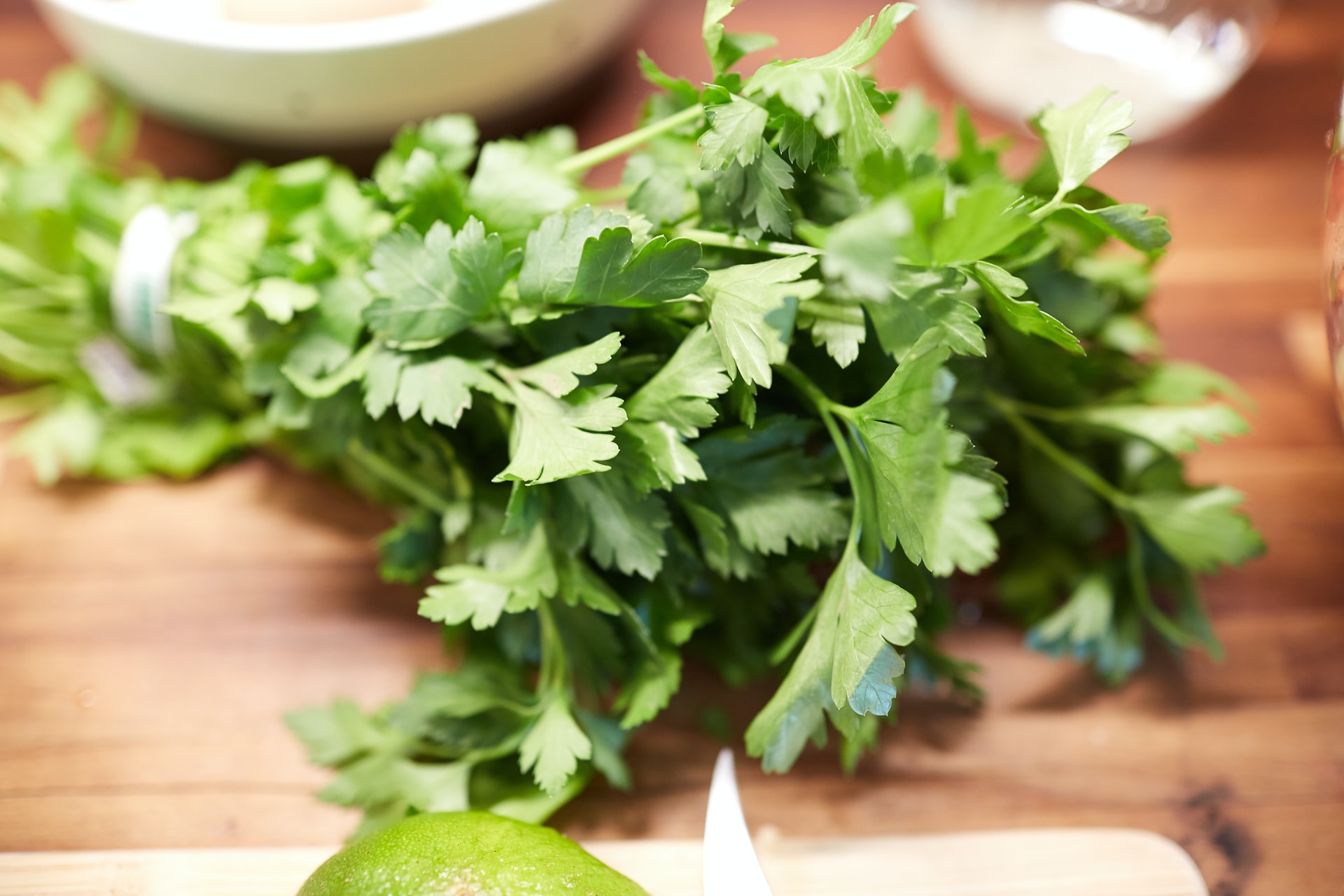Parsley originates from Mediterranean countries, from where it spread to all the countries of southern Europe. Naturalists have determined that the homeland of parsley is Sardinia.
In many countries in southern Europe, parsley grows as a wild or semi-wild plant. The ancient Greeks knew about parsley, but they did not use it as food. They considered it a sacred plant and made wreaths from parsley, which they wore at festive banquets. However, the ancient Romans did eat parsley. Gladiators ate parsley before fights, believing it gave them strength, enhanced reflexes, and made them more cunning. Until the end of the Middle Ages, parsley was used exclusively as a medicinal plant and for decoration at various events. Today, parsley is an indispensable culinary herb, essential in every cuisine worldwide.
Two subspecies of parsley are cultivated worldwide:
- Leaf parsley (Petroselinum crispum ssp. crispum)
- Root parsley (Petroselinum crispum ssp. tuberosum)
Nutritional Value of Parsley
Both the leaves and roots of parsley are used in cooking as an addition to dishes or as a spice. They are consumed both cooked and raw and are commonly preserved by drying.
Parsley is also valued as a medicinal plant because its components stimulate kidney function and are essential in herbal preparations for treating urinary infections. The essential oils that give parsley its aroma include apiol, sedanolide, limonene, selinene, and others.
| Nutrient | Amount in % (Root) | Amount in % (Leaf) |
|---|---|---|
| Crude Proteins | 2.1 – 3.7 | 2.6 – 2.5 |
| Crude Fats | 0.2 – 0.9 | 0.2 – 0.7 |
| Carbohydrates | 2 – 10 | 7 – 10 |
| Fiber | 1.1 – 1.7 | up to 1.4 |
| Minerals | 1.5 – 1.7 | up to 1.7 |
| Water | 86 – 96 | 79 – 88 |
Table 1: Nutritional Value of Fresh Parsley
| Mineral | Amount in mg/100 g fresh root | Amount in mg/100 g fresh leaf |
|---|---|---|
| Sodium | / | 30 – 33 |
| Potassium | 54 | 923 – 1080 |
| Magnesium | 32 | 30 – 52 |
| Calcium | 16 – 50 | 165 – 325 |
| Iron | 5 – 20 | 3 – 8 |
| Phosphorus | 24 – 77 | up to 128 |
Table 2: Mineral Composition of Parsley
| Vitamin | Amount in mg/100 g fresh root | Amount in mg/100 g fresh leaf |
|---|---|---|
| Carotene | 0.01 – 1.6 | 5 – 8 |
| B1 | 0.07 – 0.14 | 0.06 – 0.15 |
| B2 | 0.08 | 0.3 |
| B3 | 1.3 – 2.8 | 1 – 1.7 |
| B6 | 0.2 – 0.3 | 0.1 – 0.3 |
| Folic Acid | / | 0.04 |
| C | 20 – 150 | 150 – 290 |
Table 3: Vitamin Composition of Parsley
The energy value of parsley is 190 kJ/100 g for leaves and 90 kJ/100 g for roots.
Morphological Characteristics of Parsley
The thickened root of parsley, used as food, consists of the epicotyl (shortened stem), hypocotyl, and part of the true root with lateral rootlets. Leaf parsley has a less thickened, irregularly shaped, and branched root.
Root parsley has a conical white root, with varying lengths.
A rosette of feathery leaves on long petioles forms on the shortened stem. The leaves are smooth and glossy, and leaf parsley may develop curly leaves. Parsley is a biennial plant, developing only vegetative parts in the first year, and transitioning to the generative phase in the second year, forming reproductive parts.
The flowers are pentamerous (in clusters of 5), white or yellowish, and are composed of an umbel inflorescence.
The fruit is a schizocarp, consisting of two single-seeded mericarps that separate.
The seed is a small, single-seeded fruit, with one gram containing 700 – 900 seeds.













































